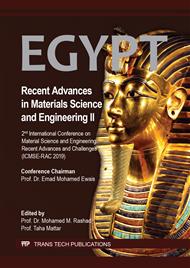p.68
p.75
p.83
p.93
p.101
p.108
p.115
p.123
p.130
Effect of Welding Processes on Mechanical and Microstructural Characteristics of DP780 Steel Welded Joints for the Automotive Industry
Abstract:
Arc welding processes are widely used in the automotive industry among other welding processes. Consequently, laser welding technology is being used instead of arc welding due to the rapid heating and cooling characteristics of the laser. In this study, empirical investigations and comparative study are held out on the arc and laser beam welded joints of DP780 dual-phase steel. Accordingly, weld joint microstructures, hardness distribution, and fatigue properties cross the butt-welded joints were investigated. The results showed that laser beam welding produces narrow fusion and heat-affected zones while gas metal arc welding produced wide welds with incomplete penetration. It was observed that the microstructure of the laser joint weld metal has mainly lath martensite in the ferritic matrix, while microstructure of gas metal arc weld metal relies upon filler type. Heat-affected zone in DP780 steel exhibit hardness softening in both laser beam welding and gas metal arc welding due to martensite tempering, a wider softening region was clearly observed in heat-affected zone welded by gas metal arc welding than laser beam welding. Generally, fatigue ratio, fatigue limit and fatigue life of the welded joints were improved by using laser welding.
Info:
Periodical:
Pages:
101-107
Citation:
Online since:
March 2020
Price:
Сopyright:
© 2020 Trans Tech Publications Ltd. All Rights Reserved
Share:
Citation:


